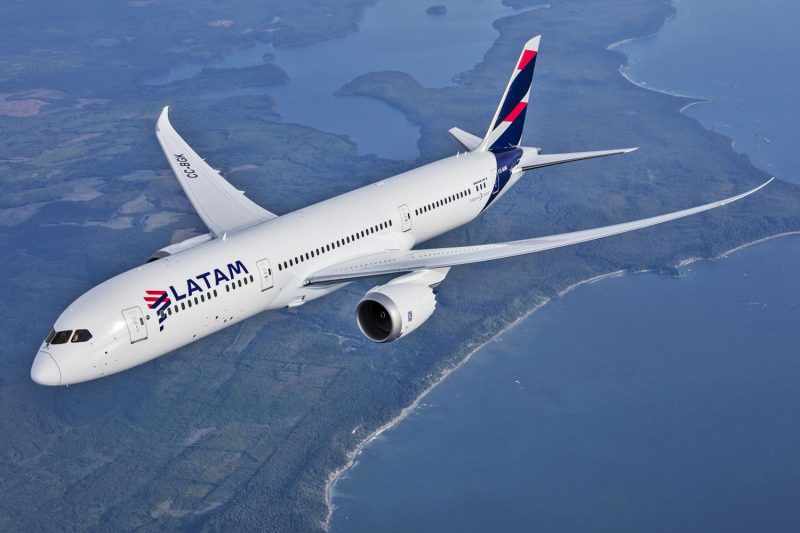Source: LATAM

LATAM group has received delivery of a new Boeing 787-9 directly from Charleston (United States) to Santiago (Chile), and is the only group of airlines in South America operating this model.
The Boeing 787-9 is equipped with advanced technology that allows it to reduce fuel consumption and CO2 emissions by 20-30% (compared to the previous technology and according to data from its manufacturer) thanks to its lightweight materials, state-of-the-art engines, and modern aerodynamics.
Its arrival is part of LATAM group’s fleet renewal and modernization strategy, which will enable it to have 37 Dreamliners – including the 787-8 variant – by the end of this year, becoming one of the most modern and efficient fleets in South America.
With this, the LATAM group aims to finish 2023 with a fleet of 332 aircraft, of which 78 are Wide Body and 254 are Narrow Body.
“Our renewal and modernization strategy for the fleet is fully aligned with our commitment to sustainability and brings us closer to the goal of becoming a carbon-neutral group by 2050. We will continue to work on complementing the current fleet with next-generation aircraft to further improve our connectivity while caring for the environment”, said LATAM Airlines Group S.A., CFO, Ramiro Alfonsin.
“The Dreamliner supports LATAM’s group sustainability strategy by offering unmatched fuel efficiency and performance, while providing the group with exceptional route capabilities and passenger comfort. We are proud to continue our long-standing partnership with the LATAM group, which connects South America to the world and makes all the difference in the communities it serves” said Mike Wilson, Vice President of Sales and Marketing for Latin America and the Caribbean at Boeing Commercial Airplanes.
LATAM group’s new aircraft will feature 300 seats and has the capacity to cover an approximate distance of 14,010 km. Additionally, it boasts larger windows, spacious overhead compartments, technology that detects and counteracts turbulence for a smoother flight, and onboard diagnostic systems that allow the aircraft to self-monitor and automatically report maintenance requirements to ground systems.
